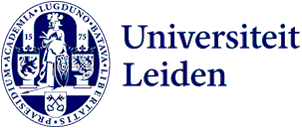
Archaeologist Martin Berger explores Latin American collections with an ERC grant
All over Europe you will find ethnographic museums with large collections of indigenous objects from Latin America. These collections shaped the image of native populations in the European mind. An ERC Starting Grant allows Dr Martin Berger to look at the bigger picture, contextualizing individual collections in a larger pan-European sphere of a collecting rage.
The big picture
Speaking with Martin Berger, the sheer scale of the project immediately comes to light. ‘The grant is for studying the collections of several ethnographic museums in Europe. 12 museums, to be precise, in 9 European countries. This, basically, to better understand why we have the collections that we have.’ While many individual collections have been thoroughly investigated, no one really looked at the big picture. ‘What is novel about the project is that we use a variety of digital driven methodologies: network analysis, big data computer models, and AI to help us identify our own blind spots, hopefully making relations between collections that we have never thought about.’
Through these methods, the goal is to better understand the history of the pan-European tendency to collect. ‘Our research period runs from 1850 to 2000, which saw the birth and death of the market in Latin American archaeological and ethnographic material. We will specifically explore the how, and the why, but also the image that the collection creates of indigenous populations.’ The act of collecting can be associated to a self-fulfilling prophecy. ‘People tend to collect the objects that they feel are important for a region, further reinforcing that image. Since museums are a contact point between original objects, the general public, and popular culture, museum objects play a crucial role in the creation of ideas about and representations of other cultures.’

Digital databases and indigenous peoples
Berger chose the museums of study as wide around Europe as possible. ‘The other criterion was a well-maintained digital database, which caused many museums to drop out. Weirdly I have now created a project without any Spanish museums, but I want to include at least one at some point. Perhaps we can use this project as an incentive to develop a digital database for museums that do not have one yet.’
Another important aspect of the project is reaching out to the indigenous peoples whose ancestors created the objects in the first place. ‘The aim is to build a huge database of indigenous heritage in Europe, which can be a reference guide to people who want to know where their heritage is. Moreover, we can use the knowledge of these people to gain more information about the collections themselves.’

Colonial experience
One of the reasons Martin Berger received this ERC grant is his extensive experience as a museum curator at the National Museum of Ethnology in Leiden. ‘Moreover, one of the unique things in this project is that we tie the discussion of collections and repatriation to Latin America. This discussion is nowadays mostly focused on the African colonial experience. The Latin American countries were already mostly independent before the European ethnology museums were founded. As a result, the colonial context of these collections has not been recognized in the same way. By focusing on Latin America (in relation to Europe) I hope to sketch alternative histories of colonialism, showing that these systems did not cease after the political independence of formerly colonised countries.’
Archival research on steroids
The project will run for 5 years, starting in January 2024. ‘We will assemble a team of one PhD candidate and two postdocs with backgrounds in collection histories, computer science, and natural language processing.’ There is a lot of data to sift through, not only acquisition information, but also archival correspondence that is related to this. ‘This type of data is obviously not structured in the same way as an Excel sheet. It will be archival research on steroids! The scope is on half a million of objects, give or take a few. In this project we'll try to combine two of the most pressing of issues of our time (AI and Decolonization) in order to come to a better understanding of how archaeological and ethnographic collecting affected both Latin America and Europe.’
